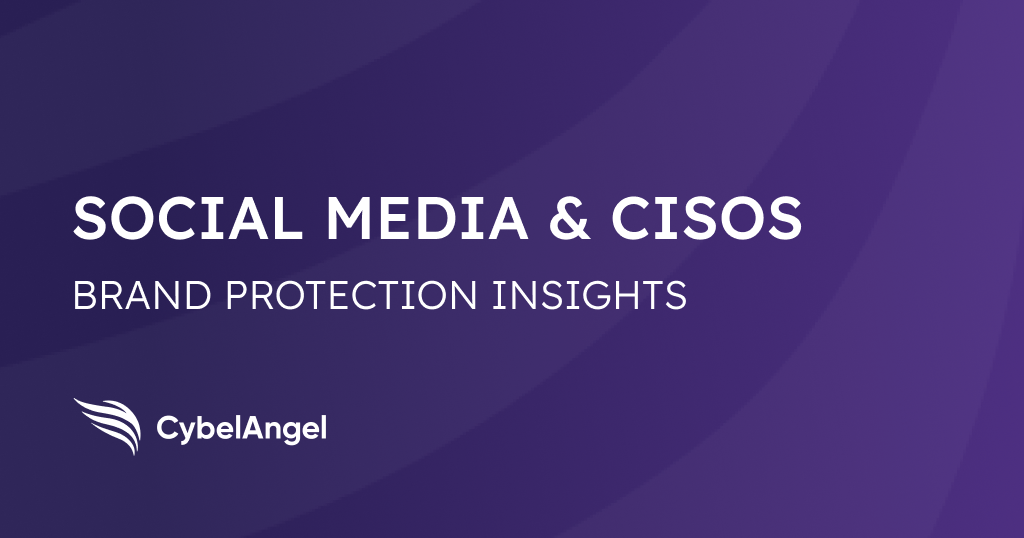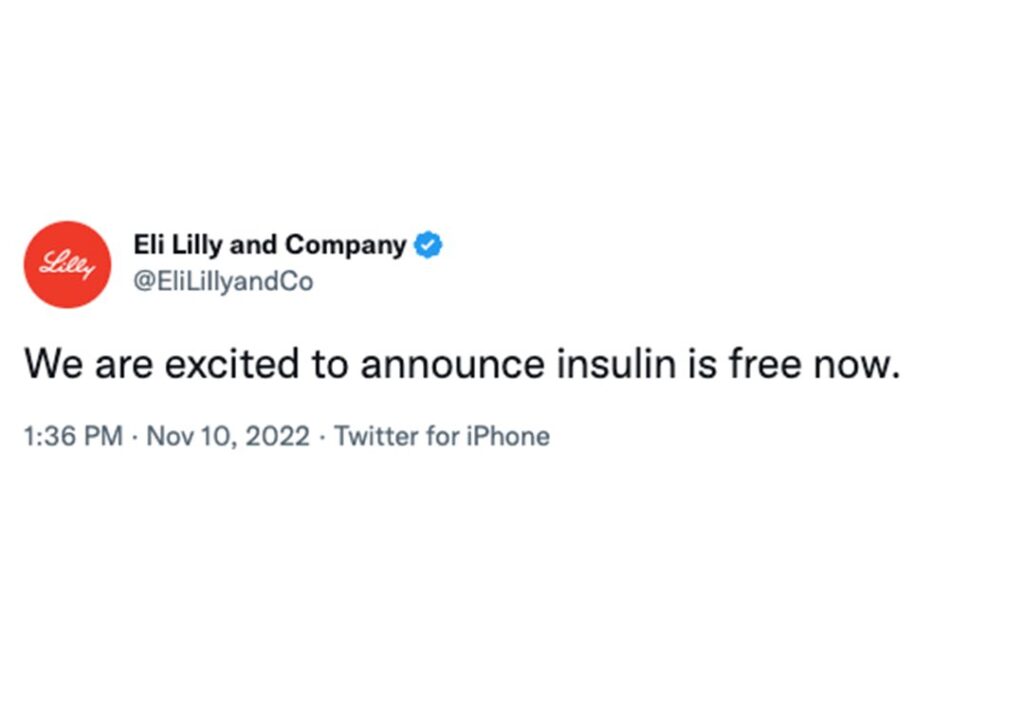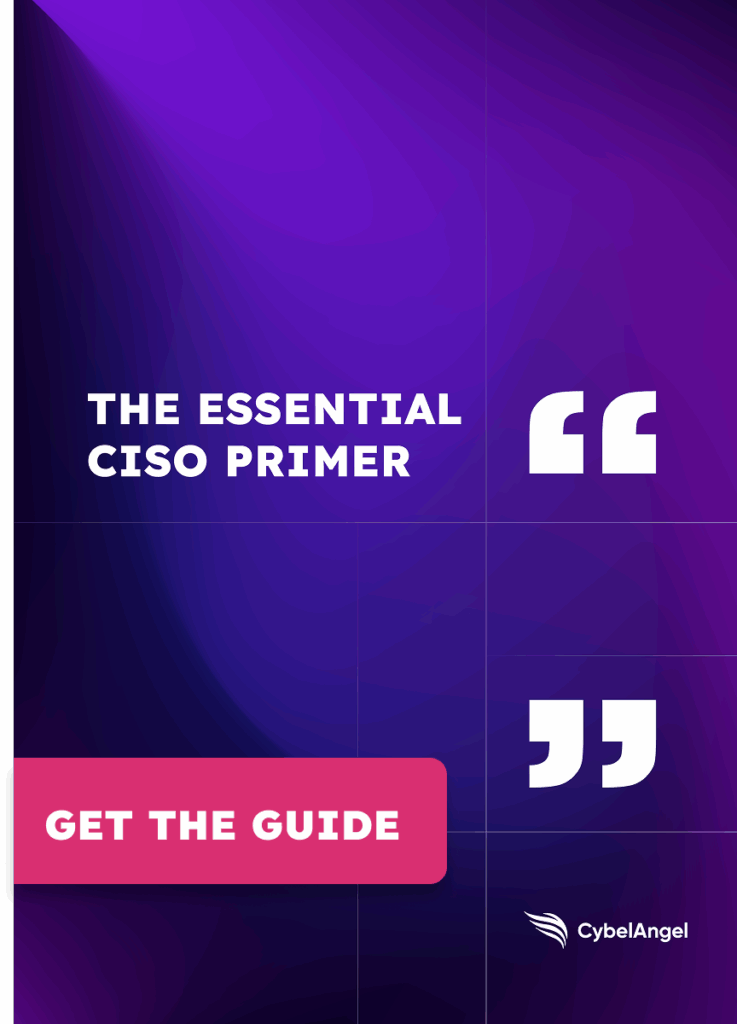How CISOs Can Better Manage Brand Protection [Social Media Cyber Edition]

Table of contents
Whether you like or loathe it, social media is here to stay with 62.3% of the world using it, and it is causing major challenges for CISOs worldwide.
Most impersonation and fraud occur on social media, where attackers have significantly improved at impersonating companies and top executives, making the role of CISOs in brand protection vital. Twitter’s $8 blue checkmark doesn’t help this problem. Instead, it worsens it by giving bad actors a platform to impersonate verified users and gain customer trust easily.
Regardless, 56% of CISOs don’t monitor social media for impersonation, putting their organizations at risk. How can CISOs better manage brand protection? Enter this insightful guide on the threat of social media brand impersonation and creating a successful social media protection strategy.
Most CISOs don’t have access to actionable information to help them evolve in the cybersecurity sphere and stay ahead of impersonators. We’re going to change that by sharing our knowledge on brand protection and expert tips on how to prevent impersonation.
What is social media brand impersonation?
Brand impersonation involves scammers creating fake accounts of well-established companies or government departments on Facebook, Instagram, LinkedIn, and Twitter. They also place social media ads promoting counterfeit goods, resulting in stolen money or data, without the intention of delivering the products.
Hackers also set up fake social media accounts of important individuals. In the second quarter of 2023, researchers observed a 22% rise in key personnel and corporate social media impersonation accounts. These social media profiles typically request money or send phishing links.
The Federal Trade Commission (FTC) reported a sharp rise in cash payments to scammers impersonating government officials, with losses nearly doubling from $40 million in 2022 to $76 million in 2023. In the first quarter of 2024, $20 million was lost. The median loss was $14,740.
Why is it a rising threat?
Attacks through social media platforms pose a serious risk because they’re improving by the day. CISOs must now focus on various online threats, like social engineering, executive impersonation, and social media brand impersonation.
Luckily, they can prevent social media impersonation by implementing effective brand protection strategies as well as joining forces with CMOs and reporting suspicious activities directly to CEOs.
While CISOs aren’t the ones to blame for the rise of social media brand impersonation, they’re still responsible for applying security policies to protect critical data. That being said, here’s why CISOs can’t put their trust in social media platforms and must take proactive steps toward impersonation.
Lack of robust security
The popularity of social media platforms rises but their cybersecurity doesn’t. Social media channels lack the same security infrastructure that traditional communication tools like email have. This gap means that social media platforms have a higher risk of experiencing various digital threats, including impersonation.
Security responsibility and prioritization
Typically, marketing departments manage social media channels rather than IT or cybersecurity teams. Marketing often doesn’t prioritize security, leaving these platforms exposed to risks. Furthermore, CISOs don’t own these channels and may struggle to integrate effective security measures without cooperation from marketing.
What are examples of abuse that have occurred?
Scammers use social media for phishing by tricking users into clicking fraudulent links that steal personal information or infect devices, according to TechReport. These schemes typically involve impersonating companies or government agencies, using cloned accounts to deceive victims into sharing sensitive data or money.
They also exploit social commerce, posing as reputable businesses and offering fake discounts. Some hackers even go as far as impersonating CEOs and other C-suite executives to deceive other employees into paying fraudulent invoices or stealing credentials.
Let’s explore some of the most detrimental social media impersonation incidents.
CEO fraud in a Texas energy company
Although this isn’t a social media impersonation of a brand, it’s still worth mentioning because the hackers had cleverly impersonated the CEO of a Texas energy company, using personal information they had gathered from social media.
The CEO’s executive assistant unwittingly paid a fraudulent invoice for $3.2 million. This highlights the importance of social media monitoring and training employees to detect smashing, phishing, and vishing attacks.
The impersonation of top-tier accounts
In 2020, hackers targeted high-profile accounts, including those of Apple, Elon Musk, Bill Gates, Warren Buffet, Jeff Bezos, Joe Biden, and Barack Obama. They used these accounts to push a cryptocurrency scam, tricking followers into sending Bitcoin for a promised double return.
The hackers disappeared with the stolen Bitcoin, revealing how even top-tier accounts can be compromised, leading to financial and reputational damage.
The impersonation of Eli Lilly
In November 2022, Twitter allowed anyone to get a blue verification check mark for $8, causing chaos. This change led to impersonation issues, resulting in financial losses for companies like Eli Lilly.

How do you develop a brand protection social media strategy?
What is brand protection in the first place? In short, it’s a strategy that involves different steps to establish and maintain a strong brand identity. Social media and brand protection go hand in hand because we live in a digital world and social media brand impersonation has been on the rise lately.
Effective brand protection on social media ensures that your intellectual property (brand name, logos, and content) remains secure from threats like copyright infringement, counterfeit products, and impersonation.
Here’s how to create a successful brand protection social media strategy:
1. Back to basics (branding protection)
Many companies overlook the fundamental steps of brand protection for social media, such as securing intellectual property and maintaining trademarks.
Failing to protect your brand identity leaves it vulnerable to copyright infringement and counterfeit products, which can severely damage your brand name.
To safeguard your brand’s image, start by registering and updating your trademarks—this is the cornerstone of protecting your brand identity online.
2. Establish your online presence
Next, you should establish your brand’s online presence by claiming ownership of your brand’s online landscape, including registering all relevant domain names and setting up profiles on every major social media platform.
It’s crucial not to overlook platforms like TikTok or Instagram, even if they aren’t part of your current strategy. Failing to establish a presence leaves your brand vulnerable to brand abuse, as someone else could take control of your brand’s identity on these platforms.
Recovering it later can be a costly and time-consuming process. By planting your flag early, you protect your brand value and minimize the need for takedown efforts in the future.
3. Utilize monitoring tools
Organizations should use monitoring tools to observe their domain names and the surrounding domain ecosystem. This means tracking new domains registered around your brand name, as they can pose serious threats. Large companies often manage thousands of domains, making it hard to monitor everything.
To protect your online reputation, it’s crucial to have policies in place that continuously monitor domains and digital channels—like search engines, marketplaces, mobile apps, social media, and email—for phishing, brand abuse, and counterfeit selling.
CybelAngel offers services to handle this for you, ensuring your brand is protected across all digital channels without any gaps.
4. Leverage threat intelligence
Organizations should invest in threat intelligence platforms to uncover vulnerabilities and counteract brand impersonation tactics. CybelAngel excels in identifying fake domains and phishing campaigns through advanced search engines, social media monitoring, and robust brand protection solutions.
5. Cover all your bases
Full-cycle brand protection services that excel in both detection and mitigation, like CybelAngel, enable brand protection for social media.
Specialty firms with advanced functionality can handle everything from spotting fake sites to removing fraudulent content through robust takedown procedures.
These firms can manage brand protection across e-commerce and social media, especially as scammers continuously evolve their tactics to evade detection.
6. Educate your employees and customer base
Since impersonation attacks often use legitimate channels like email and social media and usually don’t contain malware, traditional cybersecurity measures might fail.
Investing in phishing simulation platforms helps train employees to recognize and respond to these attacks. With better security intuition, employees can spot and report impersonation attempts, enhancing overall protection.
Regarding customers, regular awareness campaigns can help them recognize brand impersonation and avoid fraud. While some organizations worry about scaring customers, effective campaigns can actually build stronger relationships with your brand.
7. Improve your cybersecurity posture
Employees should use long, complex passwords, and security teams must implement phishing-resistant multi-factor authentication (MFA) to protect against credential theft. Integrating security solutions like XDR or SASE is also essential for blocking lateral movements. These measures will improve your cybersecurity posture and strengthen brand security.
8. Have a social media policy in place
To protect your brand effectively, implement a social media policy that offers clear guidelines. Start by defining how employees should communicate on social media when representing your brand, including how to respond to customer inquiries and manage conflicts.
Ensure employees understand the importance of digital vigilance, such as securing their accounts with strong passwords and two-factor authentication to prevent unauthorized access.
Update the policy regularly to address new risks and platforms, and provide training sessions so employees stay informed and compliant.
9. Join forces with law enforcement
CISOs should actively build and maintain partnerships with law enforcement and government agencies worldwide. Establishing direct relationships with these authorities is crucial for pursuing and prosecuting those responsible for copyright or trademark infringement, brand impersonation, and related revenue losses.
10. Hunt down impersonators
When dealing with phishing attacks that involve impersonation, take the situation seriously. Start by checking if your credentials have been exposed to data breaches using social media brand protection services like haveibeenpwned.com.
Work with professionals to locate any phishing kits on the dark web impersonating your brand. Monitor social media for fake profiles that may be misrepresenting your business or key individuals.
The Identity Theft Resource Center predicts a rise in impersonation attacks in 2024, making it essential for organizations to enforce strong security policies and enhance their ability to detect and respond to these threats.
Secure your brand from social media impersonation today

Ready to protect your brand on social media? Request a demo today and see how we can help you stop impersonation before it starts.

